THIS POST WAS UPDATED AFTER THE 2023-2-20 S/W UPDATE!!!,
please also read the epilogue at the end of this post
My Atto 3 is doing very well, had no problems or crazy things from mid-November 2022 until now, Feb. 3, 2023. And I don’t expect to have any problems with the car either….
On weekdays I usually drive 100 to 200 kilometers with the Atto 3 and therefore my 12Volt battery is always charged. But I also store the car sometimes for longer periods in the parking garage.
This electric Atto 3 only charges the 12V battery when the car is started, as most EV’s do- so I have understood.
When the car has not been started, the 12V battery is not charged and can slowly drain the 12V battery, even when you are actiively connected to the car’s charger.
The issue is how much that 12Volt battery drains, because there is only a relatively small battery in the Atto 3, since there is no need to operate a heavy starter motor.
As a precaution, I installed a measuring system on the 12 Volt battery in early February. With that I measured the voltage and discharge.
The discharge seemed to be a bit on the high side but I never had any problems with this myself.
Below my experience and measurement data is shown before and after the latest software update of 20-2-2023.
EXPERIENCES AFTER THE SOFTWARE UPDATE OF 20-2-2023:
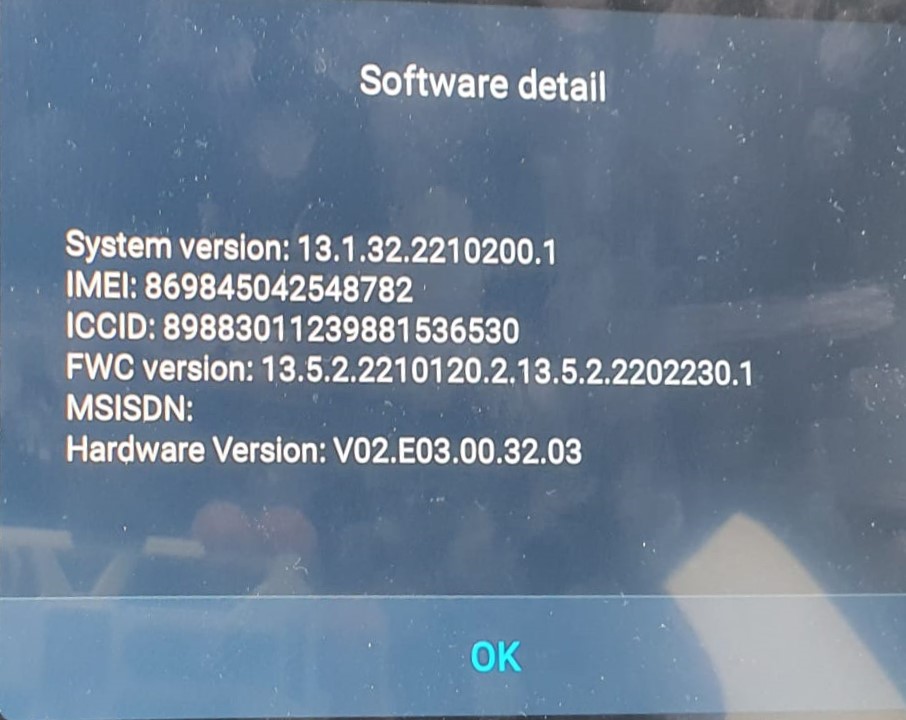
Above the updated screen in my Atto shows the new software revision.
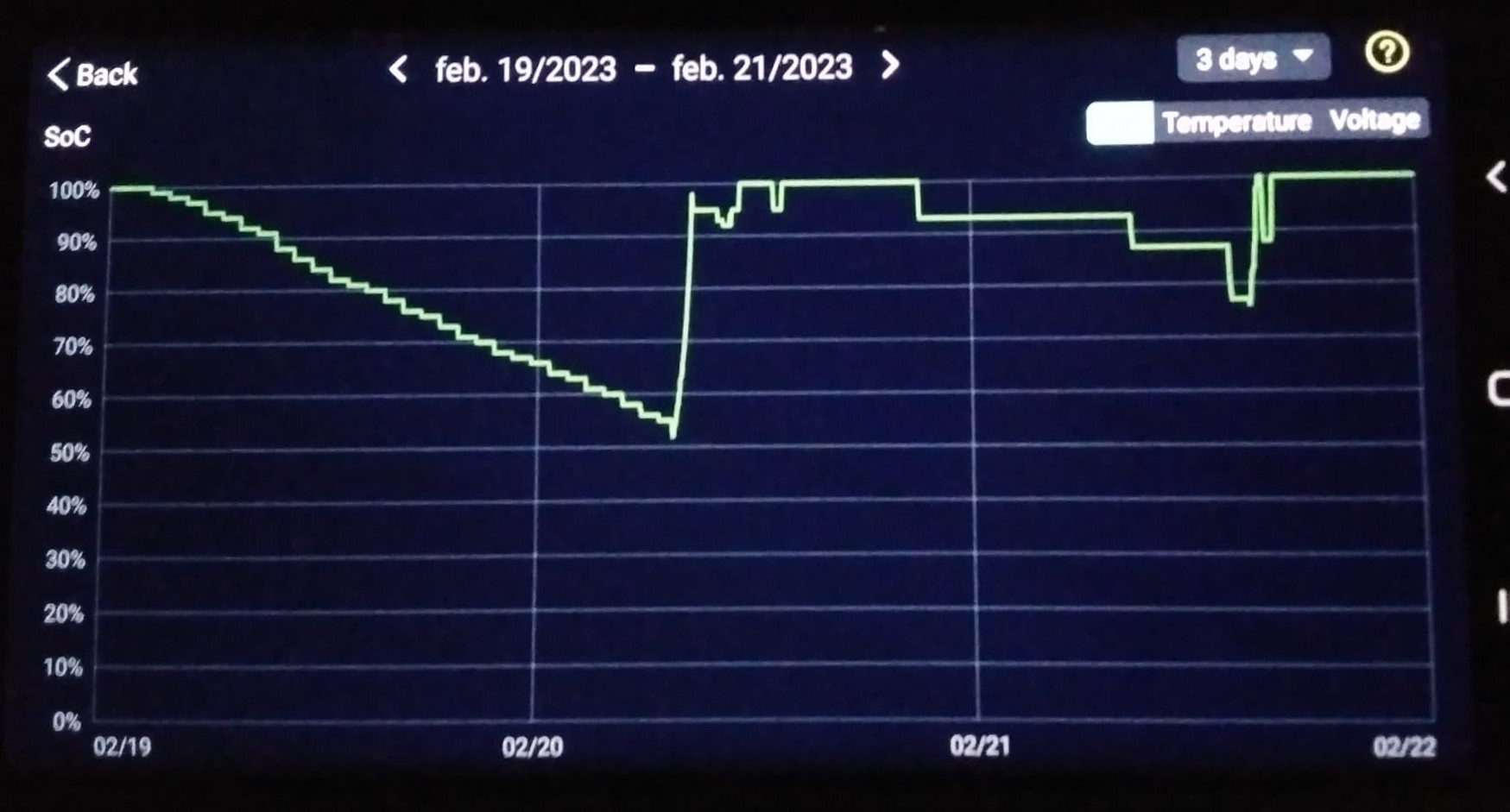
On the left on the SOC (state of Charge) printout above from my Battery measurement system you can see that BEFORE the software update the battery still runs down quite a bit in 1 day.
But AFTER the software update which I did at 8am 20-2-2-23 the battery runs down much less and much slower.
You can see that very well in the above picture of 3 days with the old software on the left and the new software on the right.
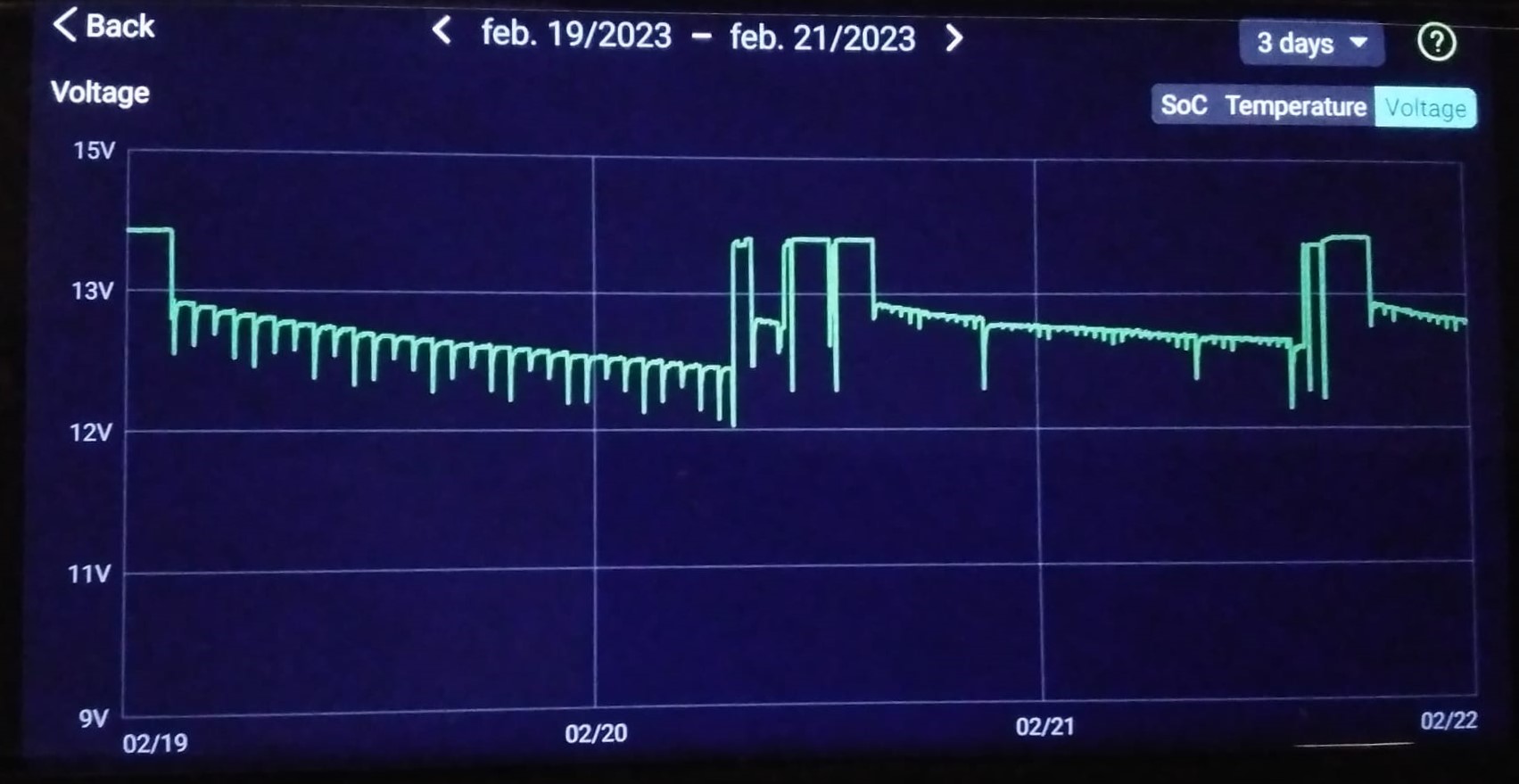
My conclusion is that the 12 V battery will discharge slower after this update.
This will result in better 12V battery oerformence and will certainly prevent starting problems which could have occured with the old software.
===============================================================
The old article on the how and why of 12Volt battery discharge with graphs and explanation is still available below and at the end our epilogue is added:
Possible problems I would like to avoid. Therefore, among other things, I provided a spare tire in the Atto 3 and made a battery guard ( Battery Guard)) on the 12 Volt battery voltage.
According to Autoweek.nl, ADAC has the following experience with failures in EVs gained in 2020: “The breakdown statistics of the German roadside assistance organization ADAC for the year 2020 revealed that even in an electric car, a faulty starter battery is responsible for 1 in 2 breakdowns. ”
Believe it or not, but the 12 Volt battery is very important in the EV because all on-board functions are provided from that 12 Volt on-board voltage. Actually, the high voltage traction battery is only used to power the car.
Everything else you see that moves or makes noise, everything else is powered by that 12 Volt. For example, even the power steering and power brakes, heat pump (air conditioning), seat heater, all fans and yes, even the battery management system (BMS) of the traction battery is powered from the 12 Volt voltage supply.
So-when that 12 Volt battery is dead nothing really works anymore.
You often can’t even get in then, unless you also got a regular key with the car. I think the BYD Atto 3 luckily has such a key, although I don’t really remember where I put it. Probably still in the dealer folder. Hmm. just put it on the big key ring anyway and don’t leave it in the car.
I once saw on Youtube how that works on an old model Tesla S, when the 12V battery is dead. There are then pull wires under the car to be able to open the hood and charge the 12V battery, then you can operate the doors again.
I am going to make a standard charging cable for my Atto 3 under the car as I did with my motorcycle. At least then you can easily charge the battery. At least when you have a suitable cable to the (external) battery charger.
Anyway, I have recently installed a mini sweater pack 12Volt in the back. With that you can always jump start an empty battery on the road. These packs do not run empty because they are Lifepo batteries. So minimal self-discharge.
A battery measuring system on the 12V battery
As a precaution, I mounted a Battery Guard with bluetooth on the 12V battery. Via bluetooth you can have diagnostic signals pushed to your phone via the app but you can also see for yourself at any time what the status of the battery is. Of course, you have to be within the bluetooth range of the device of about 5 meters.
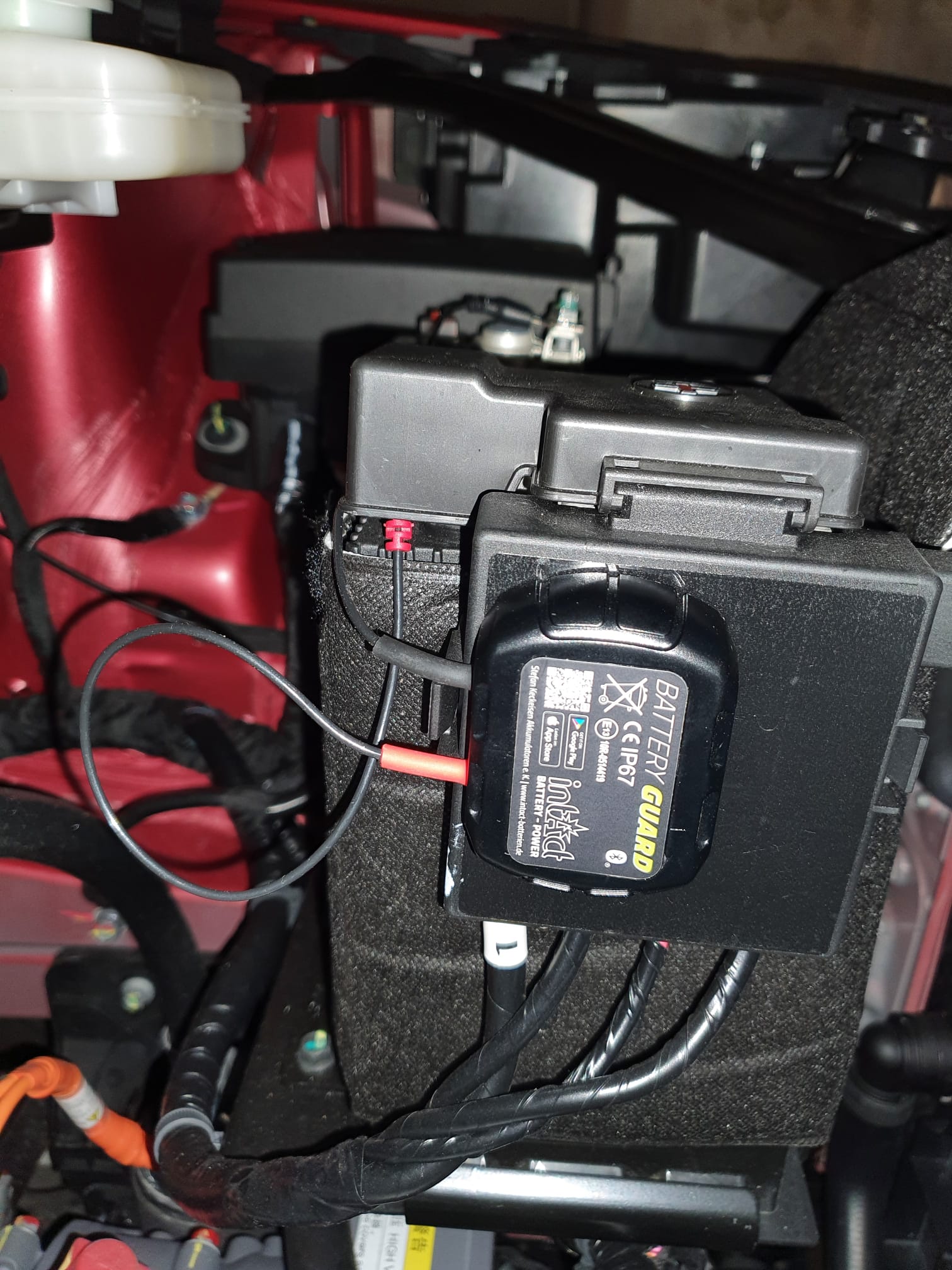

This Battery Guard is cheap and easy to install. Costs about 20 Euros and it always keeps track of the battery voltage so you can read it with your phone whenever you want. In addition, it gives alarms via the app on your phone when the battery voltage is too low or has been too low. You can also get and/or view graphs from it: This way you will know in time when your battery needs replacement!

Above you can see the daily summary of the voltage of the 12V battery of my Atto3 after I mounted it at 1:00 pm, 2-2-2023. (recorded at 8:00 pm). The first small peak on the far left is from my spare battery, in my garage. That one doesn’t count. (12:00-12:30)
What I notice is that the car charges the 12V battery with 13.8 Volts (left peak while I started the car) and at rest with spikes every hour the car discharges the 12V battery slightly. 13.8 Volts seems on the low side as a charging voltage for a lead-acid battery but is OK in principle, if indeed the battery is already reasonably fully charged. This differs per type of battery.
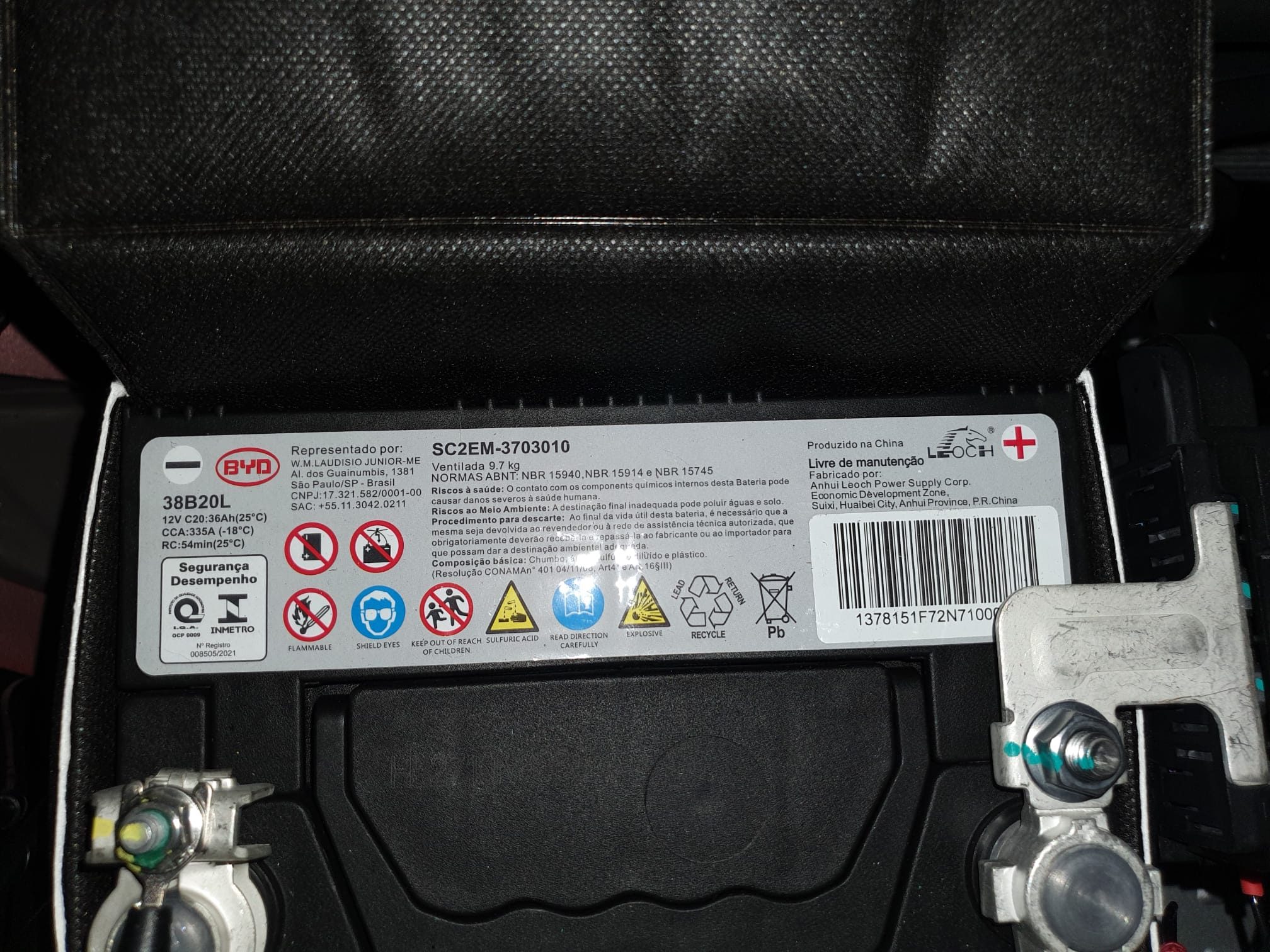
It is a SCEM-3703010 battery and it has another number on it: 38B20L. According to the sticker, it is a regular 35 Amp-hour (Ah) lead-acid battery. This battery costs about 75 Euro from VMF, among others.
“This battery is also often used in the Suzuki Vitara, Kia Picanto, Honda Jazz, Nissan Figaro, etc. for example to replace the original battery Suzuki 38B20L”.
A word about battery discharge when not driving the car: I am of course very curious as to the reason that this discharge occurs every hour as a kind of peak charge. I have now turned off all communications in the car overnight (sim/OTA, wifi, bluetooth) to see what the effect is. The car is always on the charger in the evening and at night, and during the day I usually drive about 100-200 km. Enough to charge the battery, it seems to me. Next morning there was no difference from before so I just turned the communication back on.
The voltage curve was like this without wifi, bluetooth and OTA SIM:
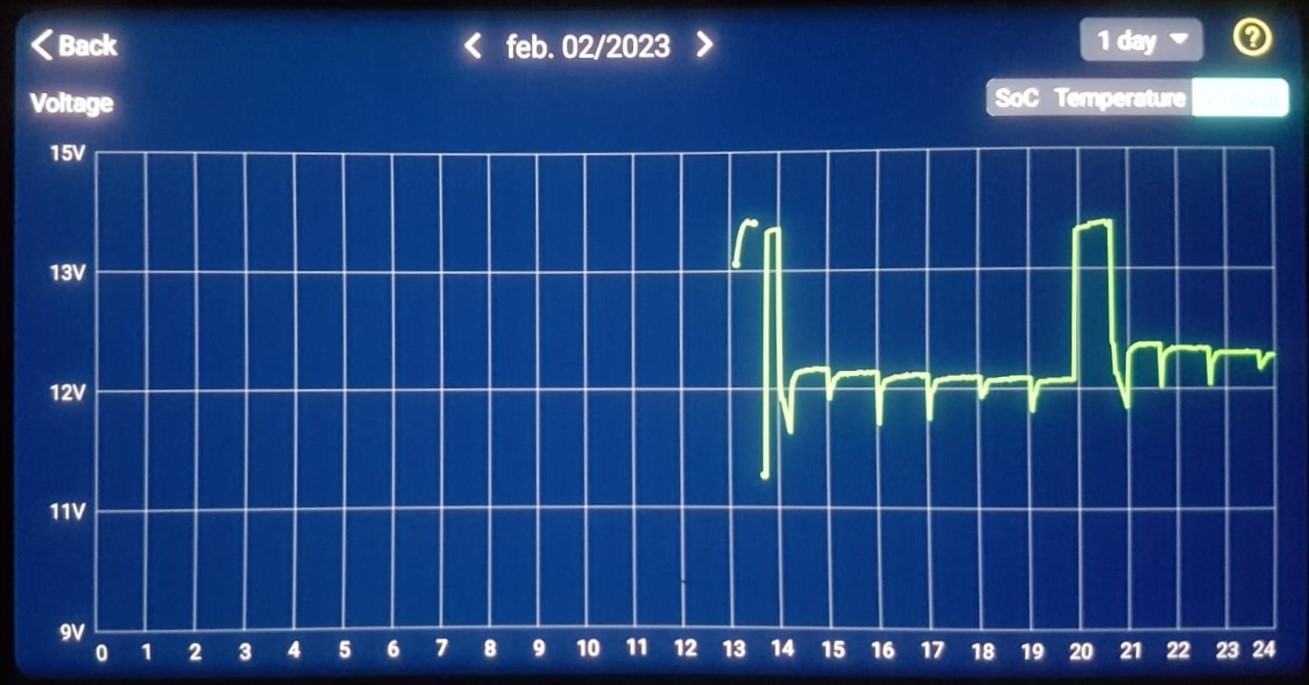
And (below) as of 07:00 after parking Feb 3, 2023 it looks very much the same with OTA connection enabled, and wifi and bluetooth all on.
Between 06:10 and 07:05 I drove the car, then the system charges the battery nicely. That gives the voltage range between 13.6 and 13.8 volts. Then parked and then the 12V battery discharged so again a bit between 07:05 and 15:20. During the return trip home between 15:15 and 16:05, of course, the 12V battery is charging again.

This weekend I am not driving the car, curious to see what it will look like then in terms of discharging the 12V battery: See below.
The car is discharging quite a bit and the voltage is almost to 12 volts.
Driven for hour in the afternoon of Friday, Feb. 3, the battery charged quite a bit and then idled for over 2 days and discharged to almost 12 Volts. Then hit the road a few times on Monday, Feb. 6, and parked again overnight, as shown on the right on the graph below.
A shame in itself that at this rate the car discharges the battery when stationary, but it is all still good enough to get the car back on after 2 days.
No worries
By the way, I experienced with our Christmas vacation of 2022/2023 that the car also just turns on after 20 days of idling without any problem.
So I’m not worried at all. Nice to see what all is going on in terms of 12 Volt battery usage of course.
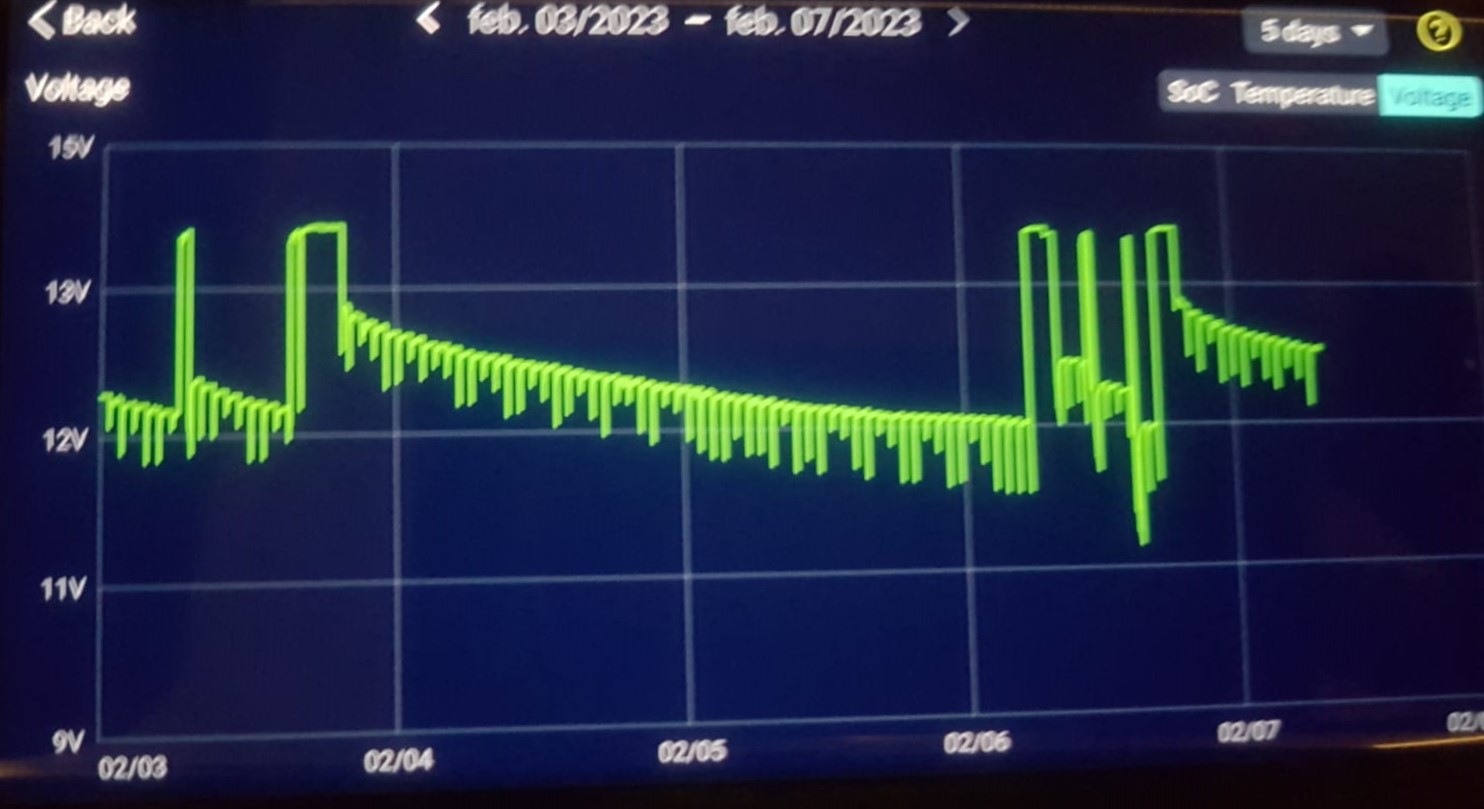
Why does the voltage level of the 12V battery actually drop?
Of course, it is normal for a 12V battery to lose charge. This already happens because of the self-discharge of these lead-acid batteries but also because of all the bells and whistles we need in modern cars.
There is actually always about 5 milli-amps to 20 milli-amps running from the battery to an average modern car at idle. I have no idea (yet) how that is with the Atto3, I’m going to measure that.
My 2010 Volvo V70 had a resting current of 20 mill-Amps and after half an hour it dropped to 8 milli-amps.
That caused a self-discharge where after 5 to 6 weeks of idling you could no longer start the car with its own battery.
I then put a manually operated ground switch between them for longer idle periods.
I’m going to do the same with the Atto 3.
As a precaution, for times when we travel by other means and are away for a few weeks.
That idle current is caused by such things as the internet connection, key receiving system, alarm and so on. So on average, within a month to 6 weeks, the 12V battery of a modern car is so depleted that successful starting becomes questionable.
In the case of an EV, the idle battery drains even faster simply because it is relatively small.
How does your EV charge the 12V battery?
In an EV there is a DC-DC converter that converts the voltage from the high-voltage traction battery back to a charging voltage of 14-15 volts for the 12V battery.
In almost all EVs, the 12V battery only charges when the car is “on.
That seems to have been copied from ICE ’traditional’ cars. Those also charge only when the engine is running.
But with the EV, you have to have the car turned on, either with the START button or the ON button.
This means that an EV at rest does charge and maintain the high voltage traction battery but the 12V battery is NOT charged at all in that situation, indeed: The charge of the 12V battery is NOT controlled at all when the car is at rest and/or being charged. Actually, this is very similar to a conventional ICE car.
If you do not drive your EV very often and/or only for short distances and you have many electrical devices on such as 2x seat heating, rear window heating, heating and air conditioning, windshield wipers and so on, then you will experience the problem with a flat 12V battery sooner than if you regularly drive longer distances.
In that sense an EV is somewhat similar to traditional ICE cars, where a dead battery is also more common with more short trips on average.
The Solution
The solution to this possible 12V battery problem in EVs does not exist (yet). The easiest way, of course, is to add a ground switch to the ground connection of your 12V battery when not using the car for long periods of time. But I never really know in advance when that will occur.
The best solution would be to have a circuit available that automatically disconnects the battery just like a ground switch but when the battery voltage drops below a critical value.
Then you can still start but the battery will not drain further.
Maybe I should develop something like that myself… Or maybe from Aliexpress?
EPILOGUE FROM THE AUTHOR 2023-02-28
IS IT GOOD ENOUGH?:
With the latest software update of 20-2-2023, there does not seem to be a problem anymore, except maybe when the car is not used for a long time. Then it is indeed better to disconnect the battery, but it is still unclear when you should do that.
The logging below shows that the battery does still discharge quite a bit.
I left the car for 4 days (etmalen) after the 12V battery was completely full. Well at the charging station but that does not benefit the 12V battery.
In those 4 days, the battery voltage dropped to about 12.3 volts, enough to start the car again.
But- the State of Charge gives an indication of just above 40% starting capacity after 4 days of downtime. And personally, I do not think that is good enough.
I had already made my decision to install the ground switch “just to be sure” so I am definitely going to do that. The switch will be under the front of the car on the bulkhead, so I can just reach it and don’t have to open the hood. It’s a waterproof surface-mounted switch that can handle 250 amps, with thick ground cables pre-mounted to it.
And I’m assuming I’m only going to use the ground switch when we don’t use the car for more than 1 week, like when we’re on vacation and don’t need the car locally for longer than a week.
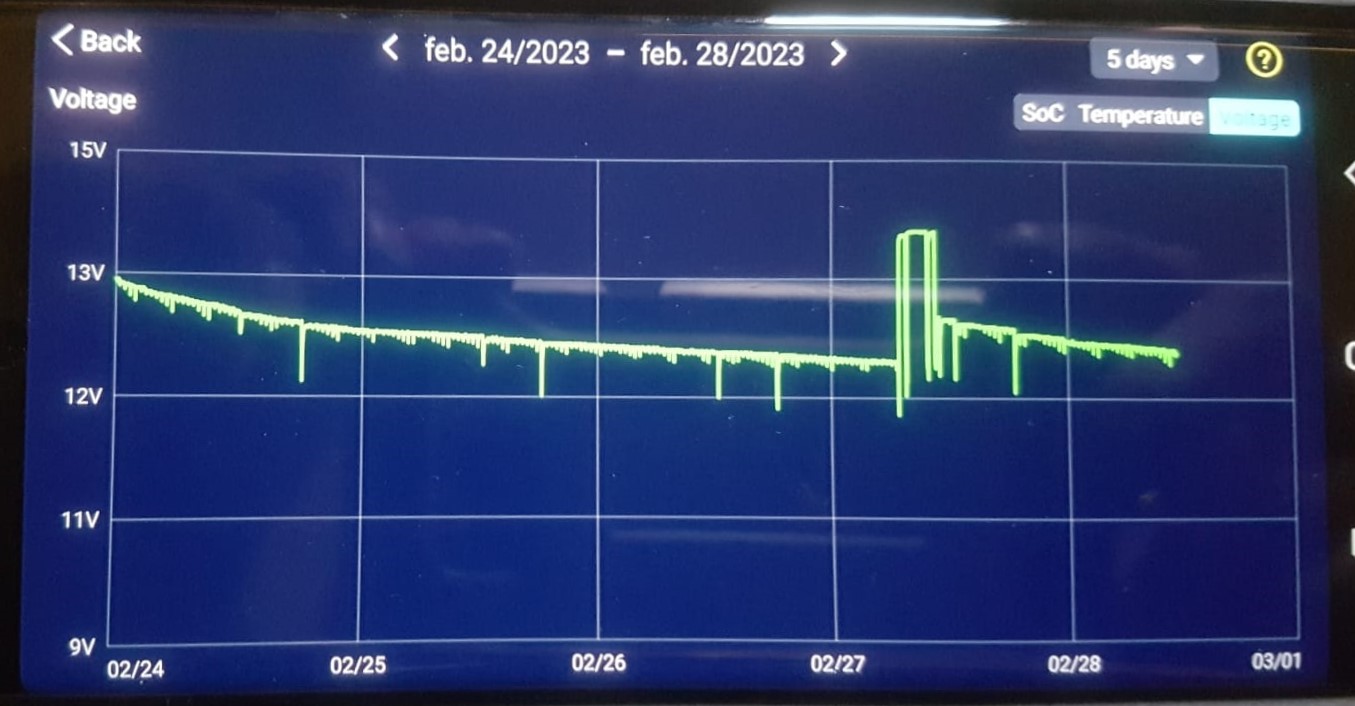

As is shown in the graphs above, the 12V battery discharge after 4 days of downtime is too much to get the 12V battery back to normal (12.8-12.9V) discharging starting voltage after a 1-hour drive.
The discharge voltage directly after stopping with charging is then as the graph indicates only 85% at 12.6-12.7 Volts. After 1 day, the SOC now already reads 60%.
Under these specific conditions, the 12V battery may discharge somewhat faster than when the 12V battery was fully charged.
Driving a bit more every day will make the charging results better, obviously.
NB: All measurements are done in my parking garage where the car is always parked which is at -2 levels, where the temperature is always between 8 and 15 deg C.
TIP OF THE DAY:
If you are worried that your 12V battery may discharge during long periods of not using the car, the following will be possible as precaution:
You can remotely turn on your start button with the app by starting up the A/C system. This will also start recharging your 12V battery.
This can not be automated, but it is a way to actively prevent draining the 12V battery.
I have tried this, and it is only helpfull if you have preset set the A/C period at the longest possible period.
Do this daily (after the initial 1 week of not-using the car) and it will certainly help conditioning your 12V battery.
It might also work if you do it every other day, I did not test this for all possible intervals.
Only do this of your car is continuously connected to a charger OR when you have charged the car at more than 80% when parked.
Cheers!


